If your hot water isn’t working, don’t think only a professional can solve it. There are many issues like leaks, not enough hot water, or rust-colored water that you can fix yourself.
In many cases, it is just a matter of a setting adjustment or resetting a button. Other common reasons for a water heater not working are a faculty healing element, sediment buildup, or a bad thermostat.
You want to solve that ASAP because a useless water heater means you’re struggling with chores like the dishes or laundry. Bathing may also be an issue.
Here, we present 10 common water heater problems and how to fix them.
10 Common Water Heater Problems and How to Fix Them
No Hot Water
If your water heater is not producing hot water, it means it is either not getting power, might have a tripped limit switch, or might have one or more failed heating elements.
How to diagnose:
- First, it is essential to check the water heater’s circuit breaker in the service panel to ensure it hasn’t tripped. If the breaker has tripped off, turn it off and then on.
- If, the heater’s breaker didn’t trip off, resetting the high-temperature limit on the heater is essential. You can do that by turning off the power to the water heater in the service panel. Then, remove the access panel. Press the high-temperature reset button which is normally red.
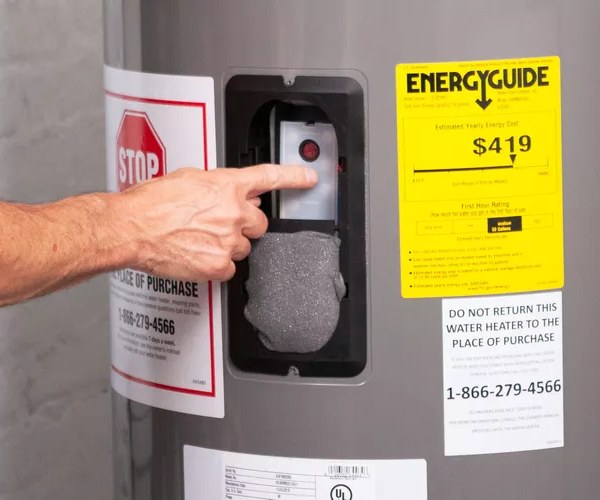
Inadequate hot water
If your water heater is not producing enough hot water, it could be because it could be too small to meet your household’s hot water requirement. In that case, here are a few solutions:
- Limit the length of showers.
- Install low-flow shower heads.
- Spread out dishwashing and laundry at different times of the day.
But, if your unit is the right size and suddenly starts producing less hot water than before, then one or both of its heating elements might have failed. For example, a defective upper heating element could be the result of a constant supply of lukewarm water during a shower. If your hot water runs out quickly, it means a defective lower heating element. In any of these cases, you must contact a professional to replace the heating elements or the water heater itself.
Water Temperature is Too Hot
If your water heater is producing too much water heater then it means that one or both of the water heater’s thermostats are very high. Fix this by:
- First, turn off the power of the water heater in the service panel.
- Then, remove the access panel and check that the heat setting on both thermostats is not more than 120F°.
- Adjust the setting turning the set screw with a screwdriver.
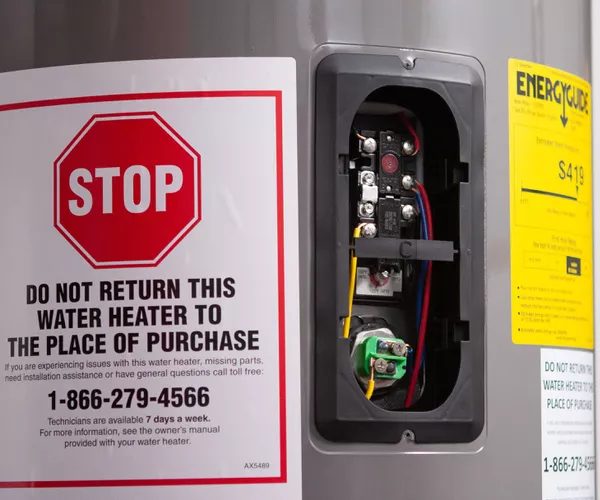
Water is Leaking
Water leaks are mostly the result of leaking valves and poor plumbing connections. If the water is warm or hot, it could be the result of a leaking outlet pipe.
Do the following steps to repair the leaking valves:
- Inspect the water heater for loose inlet or outlet pipes.
- If there are any loose connections, just tighten them with a wrench and the leak will be fixed.
Rust-Colored Water or Bad Odor
When brown, yellow, or red-tinted water flows from the faucets, the water heater tank may be internally corroded. When water smells like rotten eggs, it could mean that the hot water tank has bacteria.
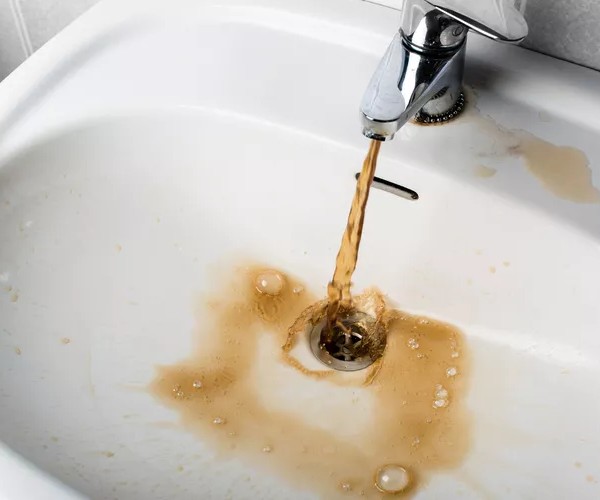
To solve the tinted water problem:
- Consult a plumber to replace the anode rod in the water heater tank. An anode rod is a metal rod in the center of the water heater that corrodes more easily than the tank itself. Corrosive oxygen is attracted more easily to the anode rod than to the water heater.
Bacteria that are present in the potable water can be fatal if ingested. Consult a professional if you suspect any of that sort.
Also, Read Learn How to Grow and Care for Golden Bamboo Indoors!
Tank Making Noises
Sometimes your water heater could produce sounds like a low rumbling, popping, or high-pitched whine. These all could mean that the water in the tank is boiling. The build-up in the bottom of the tank can cause the bottom of the tank to overheat and the water to boil.
To solve this problem:
- Turn off the power and water supply to the water heater.
- Then, completely drain the water out of the heater and sediment and then refill it.
- Attach the inner-threaded end of a garden hose to the valve at the bottom of the water heater with the other end located outside.
- Open both the temperature pressure relief valve at the top and the drain valve at the bottom.
- After fully draining the water and the sediments, close the bottom value and the upper-pressure relief value, then remove the hose.
- Turn on the power and water again.
Leaking Cold Water From an Inlet
If you see a pool of water developing at the top of the water heater, it might be due to a leaking cold water inlet. This inlet is situated at the top of the water heater. Often, tightening this connection will stop the water leakage.
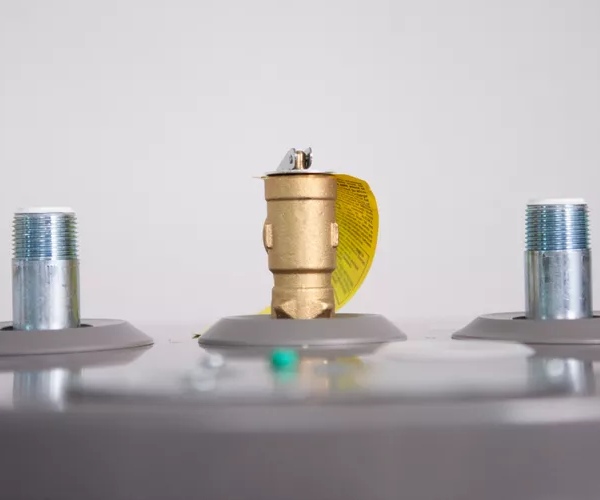
After you turn off the water supply to the water heater, tighten the inlet connection with a wrench by turning the water supply on again. Then, dry off the top of the water heater, and observe for leakage.
Damaged Pressure Relief Value
The temperature pressure relief valve on the side of the water heater may develop some leaks. In most of the cases, you can replace the valve yourself. You can do it by following these steps:
- Turn off the electricity and cold water supply to the water heater.
- Drain water and pressure by opening the valve with a bucket placed below the plastic relief valve drain pipe.
- Unscrew the pressure relief valve with a pipe wrench.
- Screw the valve into the heater and be sure to use Teflon plumber’s tape.
- Attach the plastic relief valve drain pipe.
Water Heater is Leaking from the Sides
If you see water leaking from the sides of the water heater, it could mean a tank is leaking because of damage or corrosion. This type of leak mainly flows from certain areas like cracks or holes.
If a tank has damage or corrosion, then it should be replaced because it can not be safely repaired.
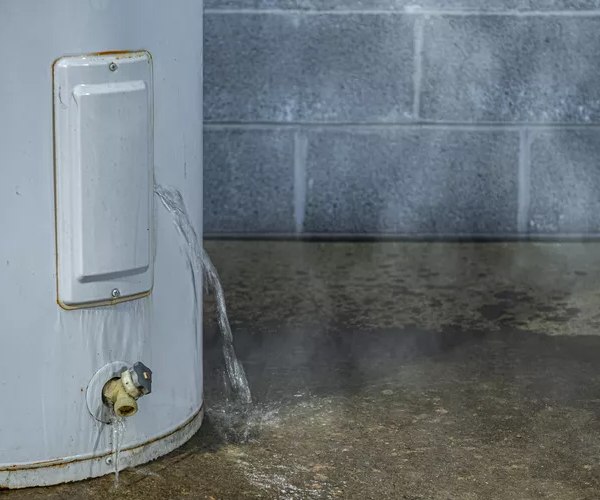
Condensation on the Water Heater
Leaking water heaters may be giving off water condensation which will be widespread across the tank’s outside. Water heater condensation usually does not show a problem with the water heater but can damage the flooring.
To fix this condensation problem:
- Set the temperature at 120F° or even lower to 115F°.
- Have a plumber disconnect the water heater and add a drain pan underneath to catch drips.
When to Take a Professional’s Help
In many cases, you can fix the water heater problem without any professional help but that might not be the case always. Sometimes, you may need to replace your water heater. These are the situations where you need to call a professional to fix or replace:
- Tanks with damage or corrosion on the tank itself (you will need to replace the entire tank).
- Cases of tinted water or foul odor.
- If you suspect bacteria in your water.
- Certain instances of inadequate hot water.
The water heater may also have a warranty that covers professional repairs to some extent. Go through the paperwork that you have with the water heater or consult the plate that is on the heater’s side with the model and serial number.
These numbers show the year the tank was made and can give you an idea of whether the tank has a divided warranty that might offer a new tank or parts, either for free or at some discount. However, remember that warranties do not cover labor costs.
Maintenance Tips to Prevent Water Heater Problems
Regular maintenance of your water heater is essential since that can help you prevent problems in the first place. Some examples of water heater maintenance include:
- Drain the water heater at least once a year.
- Insulate the pipes.
- Have the water heater inspected regularly.
- Keep the temperature at 120F° or lower.
- Test the temperature pressure relief valve once or twice a year, with a bucket placed under the outlet tube to catch water.
- Have a plumber replace the anode rod about every five years.
FAQs
Q: How to reset my water heater?
A: A water heater will have a reset button. Typically red, you can locate your reset button directly next to one of the thermostats (most likely the top one). To reset, push the reset button and this should resolve the issue within an hour. Just be sure to avoid touching any wires when doing so.
Q: What is the most common cause of water heater failure?
A: The most common cause of water heater failure is due to a slow leak or sudden burst.
Q: Is a broken water heater an emergency?
A: It will depend on the nature of the issue. If there is a slow leak, it is okay to wait. As well, a lack of hot water isn’t necessarily an emergency but rather a nuisance. However, major leaks should be addressed immediately to avoid water damage and other issues.
Also, Read A Complete Guide to Aechmea Growth and Care
